
At Peugeot, 2014 – just ten years ago – saw two exceptional concept cars, with Exalt below, anticipating the 508, and Quartz validating the aesthetic theme of the future 3008 star to be unveiled in 2016. This firework display is accompanied by a welcome return to management control.
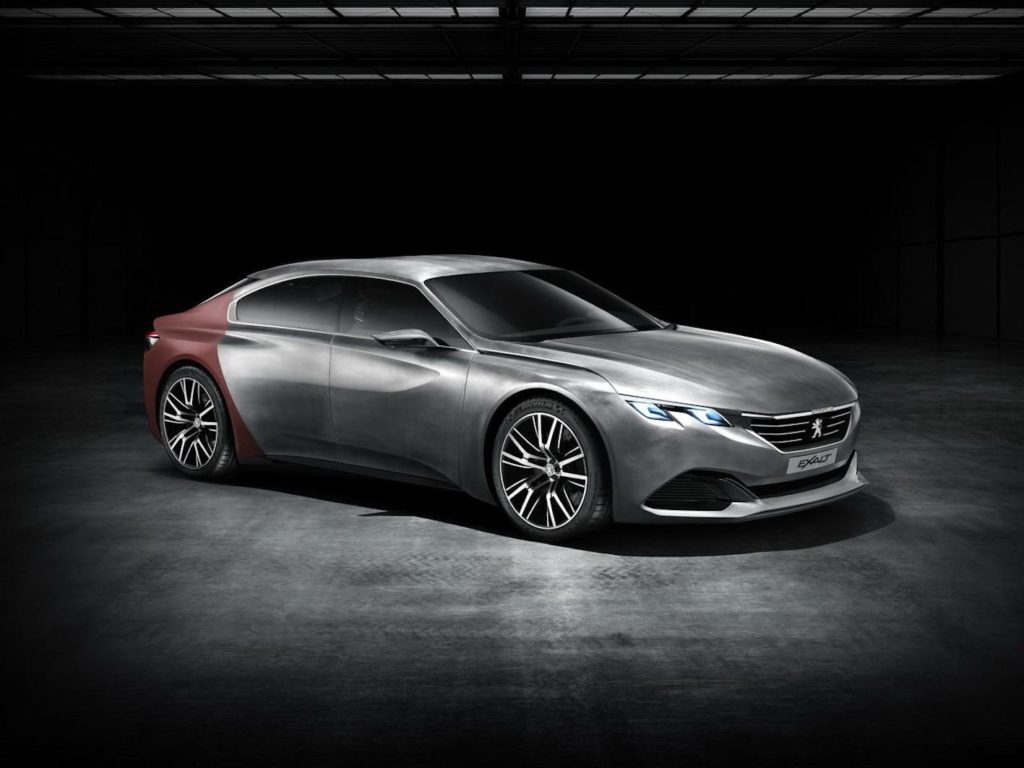
The Exalt concept car was unveiled in China in April 2014, followed six months later by the Quartz, presented at the Paris Motor Show. Both have a very different philosophy, as Matthias Hossann, who was responsible for this concept car at the time before becoming Peugeot design director in 2020, confirms. ” Exalt brought the 508 to life. The two concepts lived in parallel. However, even though there was still work to be done on the 3008, the idea with Quartz was to communicate on our compact crossover. We knew that the leap between the two generations of the 3008 (2009-2016) was phenomenal. The idea was to showcase a very dynamic 3008.
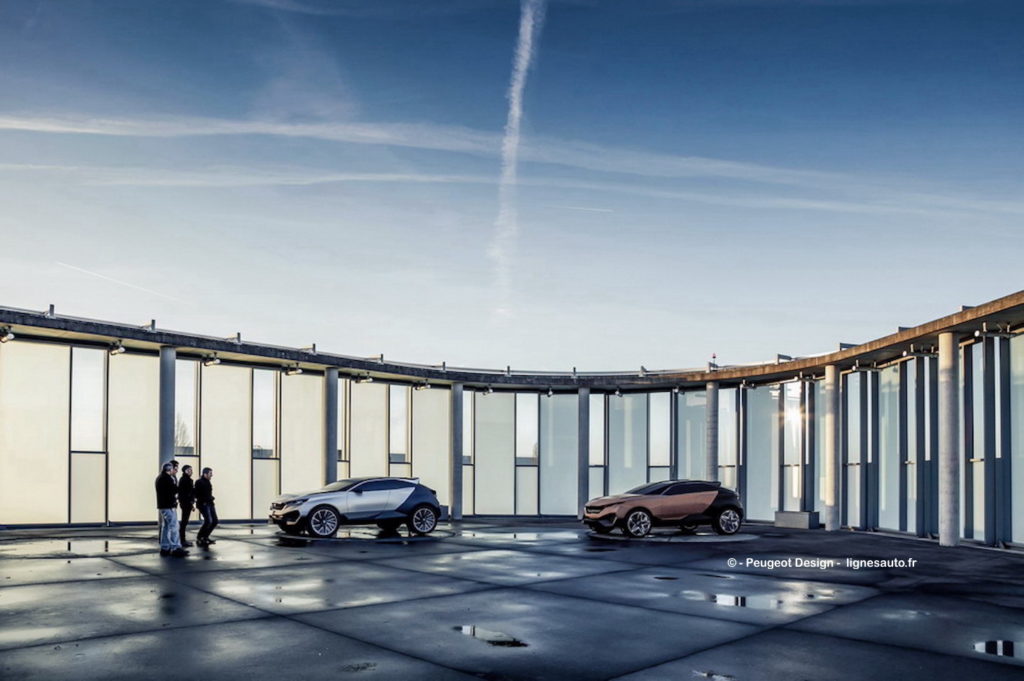
Technically, Quartz will also be inaugurating the 3D handset that will appear with the 208 in 2019. ” It’s an experiment developed in-house,” explains Matthias. It’s worth remembering that this type of technology was not previously available on general-purpose vehicles. This concept is the dynamic image of the new design of the future 3008-5008. Gone are the curves and classicism, replaced by energy and taut, bevelled surfaces.
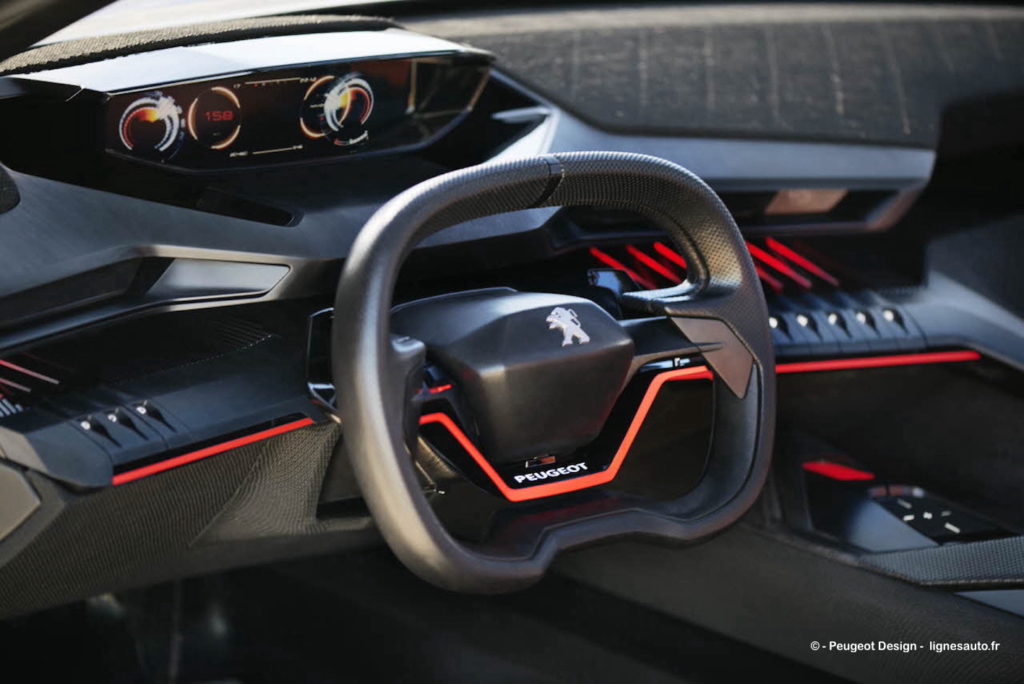
And this time, it is indeed the concept that derives from the production product, even if, as Matthias Hossann points out, ” the 3008 was not yet completely frozen in terms of style, it was ahead of its time. Above all, the theme of the dashboard and the styling themes were fixed, with a feline attitude and look, and pronounced wheel arches. We have magnified all these themes in the concept car.
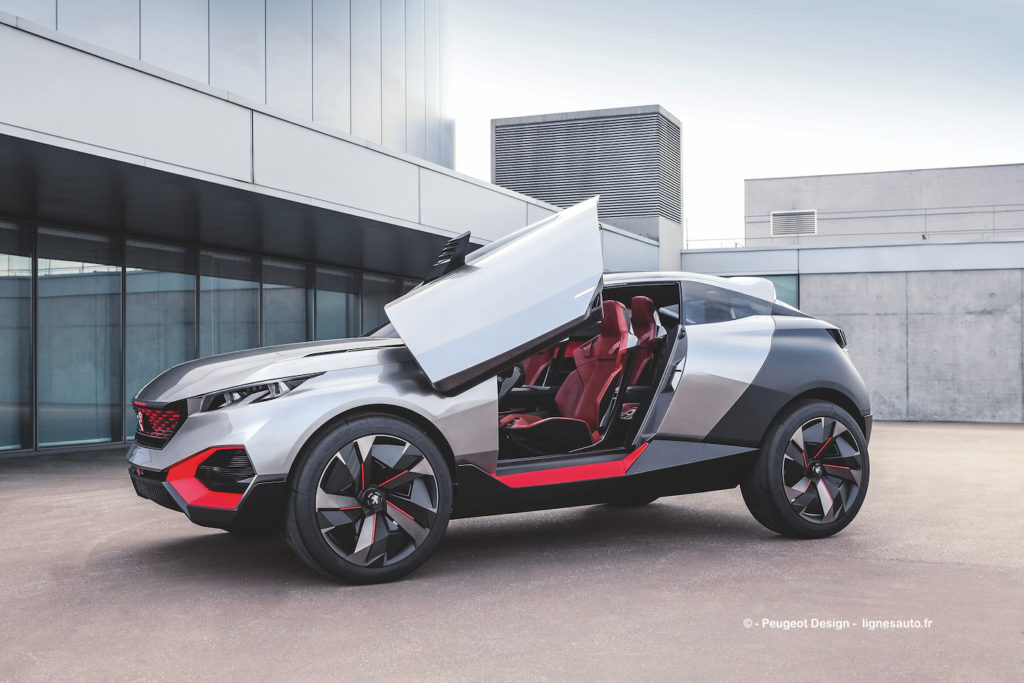
On board, innovation in terms of materials continues after the Onyx and Exalt, as Benoit Morin points out: ” We have introduced new transformation techniques, in particular knitted fabrics for the upholstery. We were inspired by the world of footwear and we knitted the fabric digitally, with no loss on assembly. This innovative process makes it possible to produce large, complex parts that can be used straight off the machine.
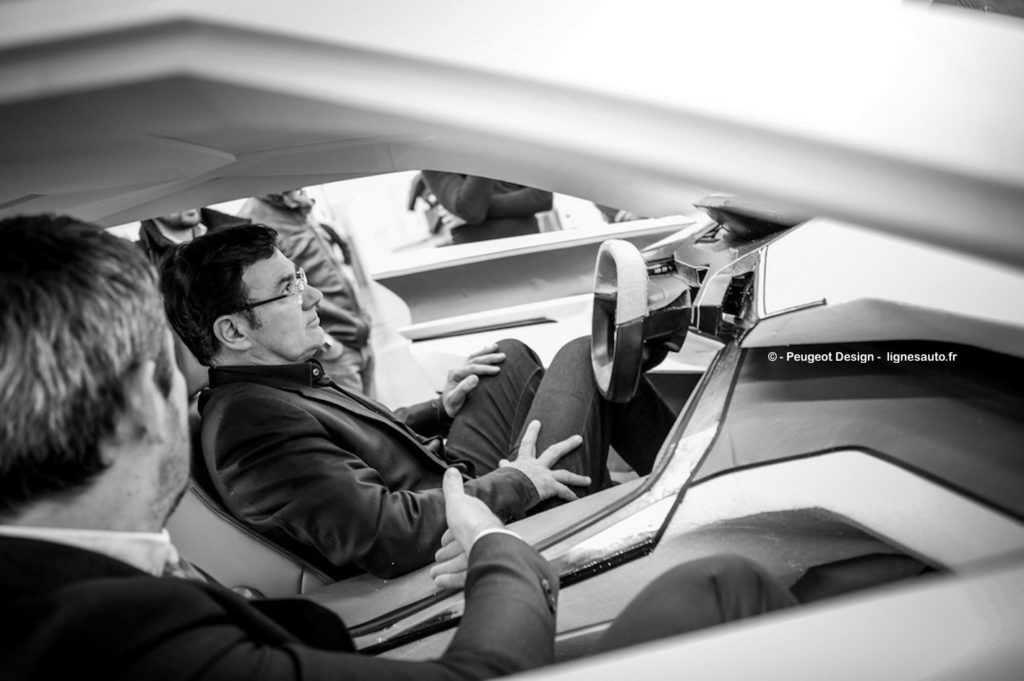
” The leather was salvaged from other seat covers and old luggage that had been given a patina by micro-perforation. We’re constantly looking for innovations that we introduce first in concept cars, which allows us to make concrete arguments internally. In this way, an idea can be more easily validated for series production, like the digital weaving that appeared on the 208 GT and 508 PSE.
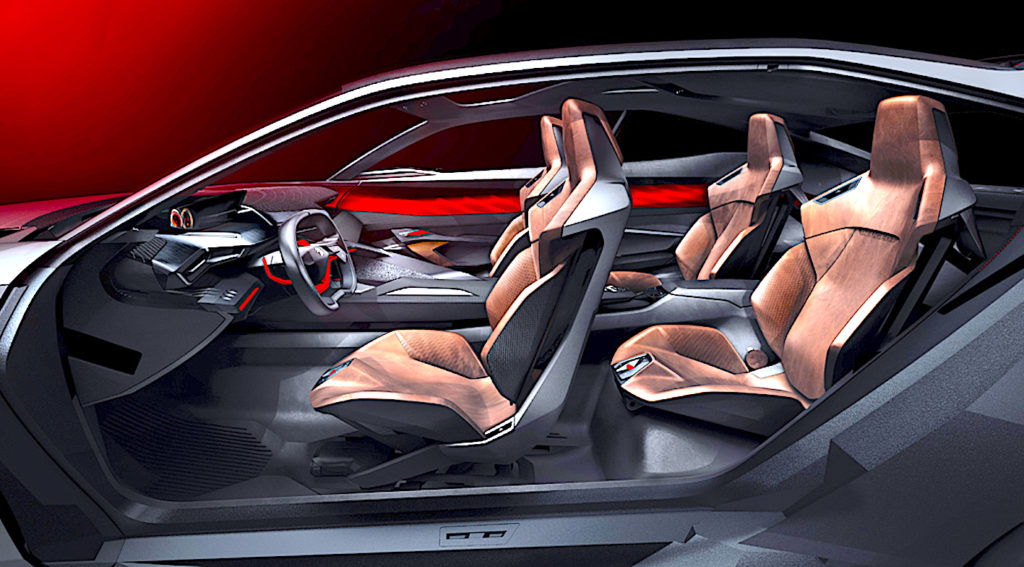
Even the basalt stone found on board Quartz has been studied for possible mass availability on certain decorative elements. It’s almost like you’re in… Mercedes! Sébastien Floutier, the concept’s colour and materials stylist, explains that ” Quartz has a contrasting exterior and interior. The latter is designed to add warmth through its elegance and refinement. It is nevertheless resolutely sporty, with an i-Cockpit dedicated to the driver and the driving experience.
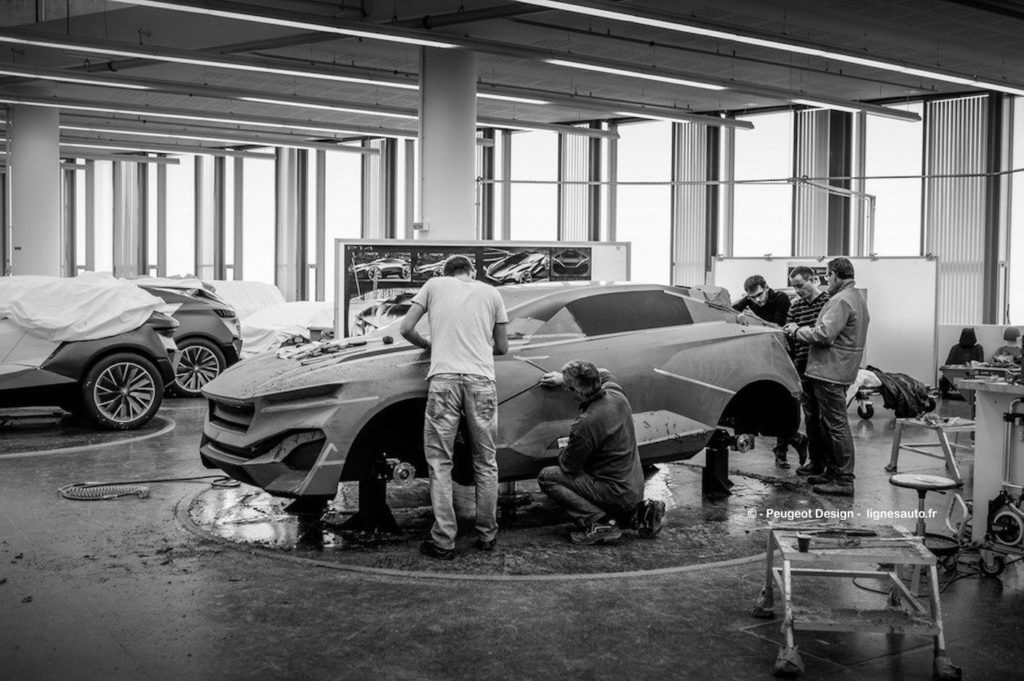
Bruno Coelho and Damien Deberdt, under the direction of Bertrand Rapatel, will liven up the interior with a dashboard featuring the piano keys of the Exalt concept, and an even more stylish steering wheel. On the outside, Thomas Bergeron, a designer who has now joined the General Motors studio in Seoul, is responsible for the sporty look of this compact vehicle, which is only 4.50 metres long. The concept’s dynamism is underpinned by its sharp styling. It moved away from the slightly sculpted, curved sides of the SR1 – and the concepts that followed – towards volumes marked by sharp creases and bevels, which the Fractal concept would bring to a climax a year later.

It’s (almost) a new manifesto that heralds the next design revolution to be applied to the 3008 (2016) and then the future 2008 SUV in 2019! At the rear of the roof, there are two Mickey Mouse ears (unofficial name) that the 408, born almost ten years later, will borrow in order to hide the recoil of the tailgate hinges! The work on the high architecture is specific and innovative.
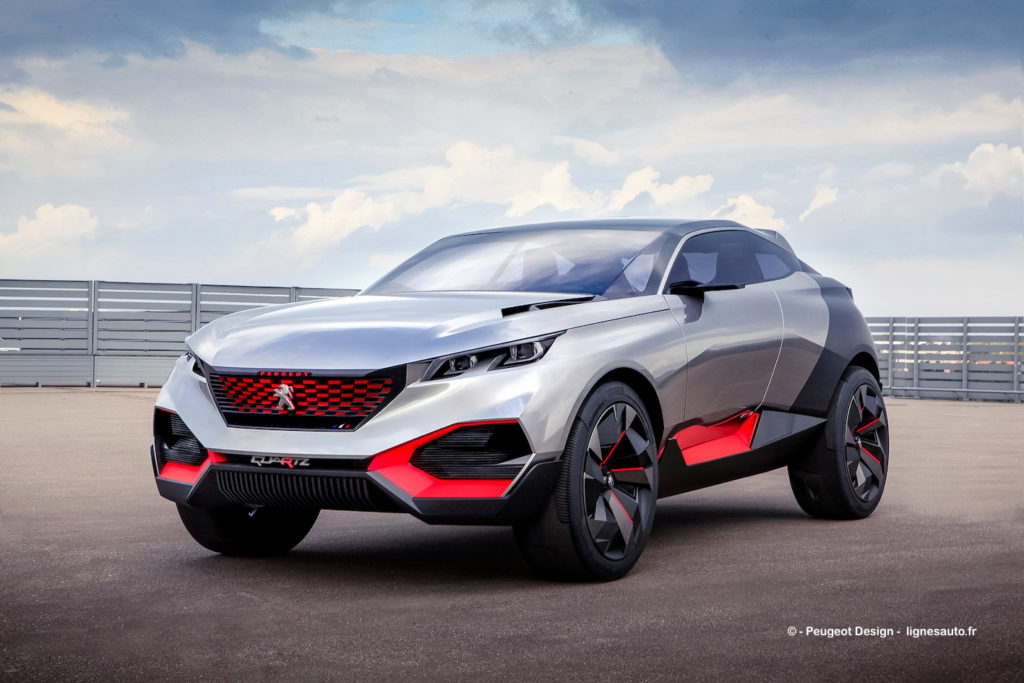
The Quartz cell is topped by two metal arches onto which the polycarbonate glazing is sealed. The glass is chiselled by quarter lines that catch the light. Matthias Hossann concludes that the Quartz ” is a monolith into which an SUV is carved at the bottom and a saloon at the top. The styling lines are guided by the function of each part. Quartz is stunning and efficient thanks to the bending of the bodywork and the innovative materials used.
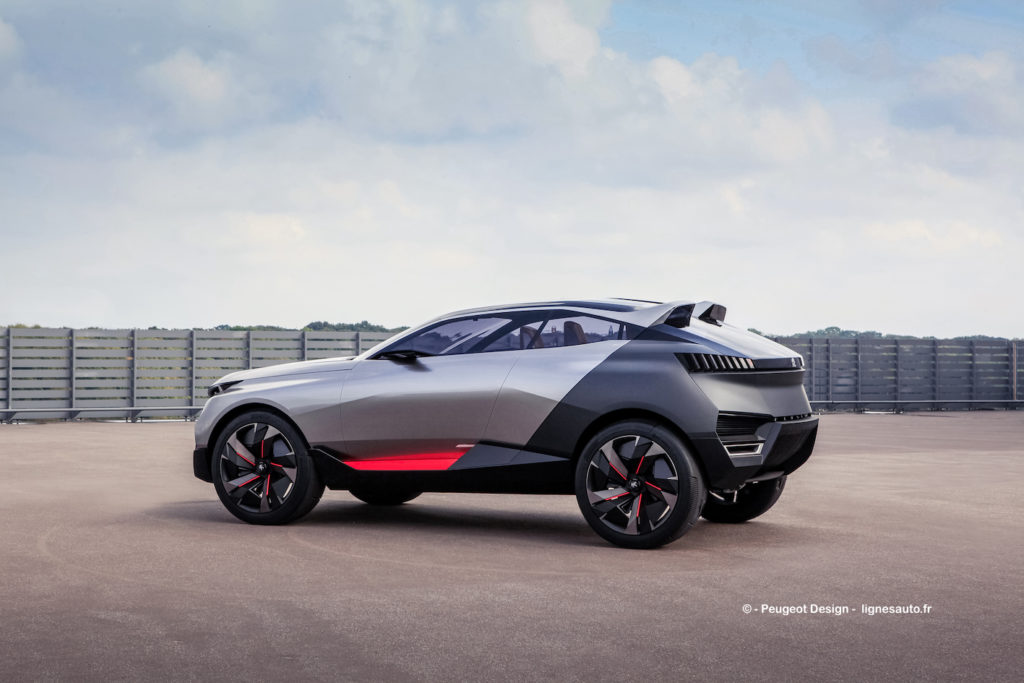
Technically too, the concept puts the emphasis on sportiness. Its sculpted bonnet houses the 270 bhp 1.6L THP engine developed by Peugeot Sport, coupled to a 6-speed automatic gearbox. The front axle is powered by an 85 kW electric motor. This recharges the 400V battery during deceleration and assists the combustion engine during gear changes. The rear axle is powered by an identical electric motor, which also helps recharge the battery.
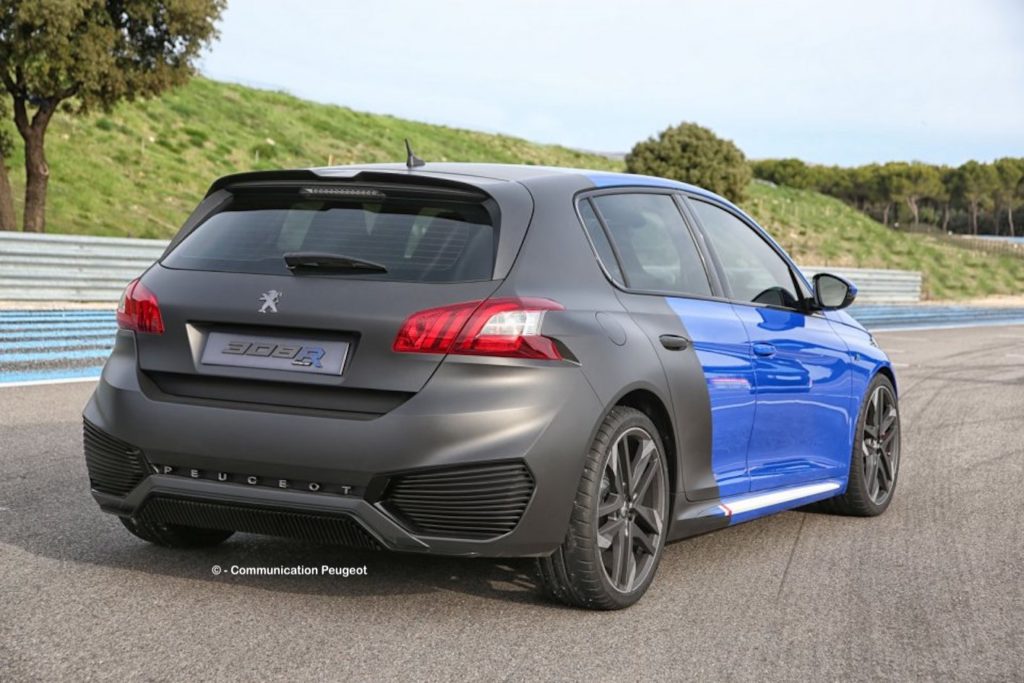
A few months later, this powertrain found its way under the bonnet of the prototype Peugeot 308 R Hybrid (above), with the same 500 bhp output. Although production of this diabolical machine was long hoped for, it was finally abandoned. However, one of its drivers is delighted with the behaviour and technological achievement of this project. That man is Carlos Tavares himself.

